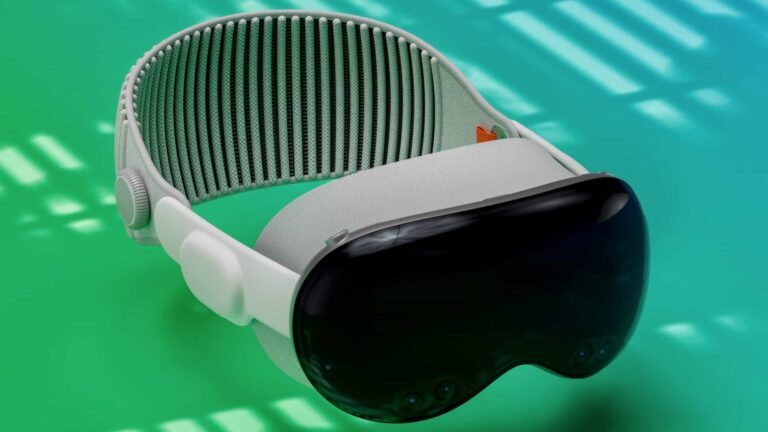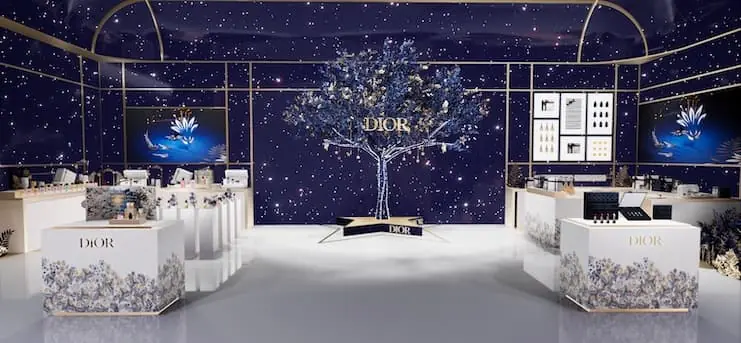
Over the past decade, the race for immersive eCommerce has accelerated, and augmented reality has played a key role. At first, AR for retail was pretty simple – static virtual overlays and gimmicky applications that, although conceptually compelling, tended to lack depth and functionality.

As AR technology has developed, so have its applications for retail, which are now far more advanced and practical. Today, customers can use AR to see how true-to-size furniture looks in their homes, to try-on clothes virtually while moving in real-time, or to see how makeup products look on their skin, all with a fair degree of accuracy.
With mixed reality (XR) headsets like the Apple Vision Pro now on the market, AR for eCommerce is ready for its next push forward. While it and devices like it have yet to see mainstream adoption, having these devices in the hands of developers has provided valuable insight into potential future use cases. Many apps are currently being developed, and we are sure to see its effects on many industries in the years to come.
Equipped with complex sensors, spatial awareness, and the ability to deliver XR content of the highest quality, these devices offer a sneak peek into a future where shopping online is as true-to-life – or perhaps even better than – shopping in person.
Virtual Try-Ons: A New Dimension

One of the most immersive ways of experiencing products online is by use of live virtual try-on technology which involves a camera and connected device to immerse users in a highly interactive shopping experience. This technology makes it possible for shoppers to get a feel for products like clothes, accessories, and make-up in real-time previews, even without actually trying on the product in person.
Because live virtual try-on instantly provides an accurate and efficient way to evaluate style and fit, it also significantly quickens the path to purchase. As this technology continues to improve, it will almost certainly deliver on its promise of higher customer satisfaction and fewer returns due to customers’ unmet expectations.
Multiple companies have already experimented with this Virtual Try-on technology, both on the open web and on social platforms like Snapchat.

Thanks to the leap in processing power over what is normally available in consumer-facing hardware, mixed reality headsets such as the Apple Vision Pro are enabling new advancements in Virtual Try-on. These headworn devices allow customers to emulate the sensation that there is no screen dividing them from the digital version of the product they’re interacting with, making it seem more real than ever.
While live virtual try-on is currently possible through a desktop or mobile device, the limitations of the device screen size creates a barrier to full-on realism. And while the optimal UX for headset virtual try-on still needs to be worked through, we have already seen, thanks to features like the hyper-realistic personas offered by the Apple Vision Pro, how it can work seamlessly when it comes to products like beauty and eyewear try-on, even in a web-based setting:
As personalized avatars become increasingly realistic, headworn devices could allow full-body replicas of the user (their exact measurements taken into account) that mimic their movements in real-time as a vessel for trying on digital replicas of outfits they are considering for purchase. The effect will be as if they are looking in a mirror in a fitting room, and would let users instantly try on without having to go through the hassle of physically changing clothes.
This scenario realizes the capability of AR for shopping, and makes online shopping more user-friendly and immersive. Shoppers could instantly switch between various styles, colors, or fits no matter where they are. That saves both time and energy, and makes it much easier to make buying decisions.
An Augmented Digital Store Experience
Mixed Reality Headsets not only replicate the try-on aspect of the in-store experience, but allow for entire storefronts to be recreated digitally. From here it is easy to imagine online shopping could soon take on all the bells and whistles of an in-person shopping experience: including the ability to consult live with a personal shopper, experience branded touch points such as product displays and 3D-styled mannequins, and examine garments from all angles while in motion.

The online shopping experience can also be social, allowing friends to take virtual shopping trips together, view each others’ avatars modeling different outfits, chat in real time, and share opinions about whether to purchase. The digital and physical shopping experiences could become so integrated that the customers can either visit a physical store to complete the purchase, or order online for home delivery: whatever is most convenient.
Mixed reality headsets make it possible to combine the comfort of online shopping with the more tangible aspects of in-person retail. That offers new ways for brands to interact with their customers as effortlessly as possible.
Beyond Fashion: Envisioning Furniture and Decor
Headsets will also be highly transformative when it comes to shopping for furniture and home goods. Online shopping for home items has its own drawbacks, the most obvious being the struggle to properly assess the size and appearance of an item in relation to its planned space in the home and surrounding decor. XR headsets let customers place virtual furniture in their rooms in 3D, and walk around to view it from any angle at true size and scale, as though it actually exists in the room with them.
XR headsets eliminate any guesswork attached to furniture shopping (which can frankly be confusing when done in person as well, since shoppers are still making guesses as to exactly how each piece will look in their own living space). They are also likely to be be an invaluable tool for interior designers.
Augmenting In-Person Shopping
While virtual shopping is likely to be the most convenient option, XR headsets also have the potential to transform in-person shopping. From wayfinding within the store to highlighting relevant product information, promotional offers, sourcing customer reviews or receiving personalized product recommendations, there are several ways a contextually relevant AR overlay could be useful to shoppers while in-store.
With just a glance, customers could receive product recommendations that match their taste or remind them of items they need to restock. This level of personalization adds a valuable touch so that each customer feels – more than ever – that the shopping experience is designed with them in mind.
Challenges and Opportunities of XR Headsets
While peering into the future of AR in eCommerce, we see a path marked by both obstacles and opportunities. One of the biggest challenges is the accessibility and scalability of XR devices like the Apple Vision Pro. High costs and limited availability hinder mass adoption, making it essential to find ways to make these devices more affordable and widely accessible.
Privacy and security concerns are also significant. XR headsets capture users’ environments and bodies in real time, raising issues that require clear policies and security measures to build customer trust. Additionally, ensuring a seamless and comfortable user experience is crucial. This includes the aesthetic design of the headset, the physical comfort of wearing it for extended amounts of time, and the development of intuitive, user-friendly interfaces.
Technical limitations such as battery life, processing power, and display quality must be addressed as well. Despite these challenges, the opportunities that XR headsets bring to eCommerce are vast and promising.
XR headsets allow brands to engage with customers in immersive and personalized ways, even outside of brick-and-mortar retail locations. This in turn will lead to more informed purchase decisions, reducing returns and increasing customer loyalty. In addition, XR opens new revenue channels through virtual stores, personalized try-ons, and interactive advertisements.
Global accessibility is another significant benefit. XR technology removes geographical barriers, enabling customers from remote areas to access the same shopping experiences as those in big cities without the need to travel, significantly broadening a brand’s customer base.
In short, while there are certainly challenges to overcome, the opportunities that XR headsets present for eCommerce are extensive. Advancements in technology and growing interest from developers and consumers indicate a promising future. As XR headsets become more ubiquitous and their applications more fine-tuned, they are set to change the way we shop: creating a more immersive, interactive, and satisfying experience for consumers worldwide.
Virtual Try-on technology from companies like GEENEE, combined with these innovative headsets, will continue to blur the lines between the physical and digital worlds. That will pave the way for a future where virtual shopping becomes indistinguishable, and in many ways preferable, to shopping in person.
 Vladislav Bondarenko is lead AR Engineer at Geenee AR
Vladislav Bondarenko is lead AR Engineer at Geenee AR

